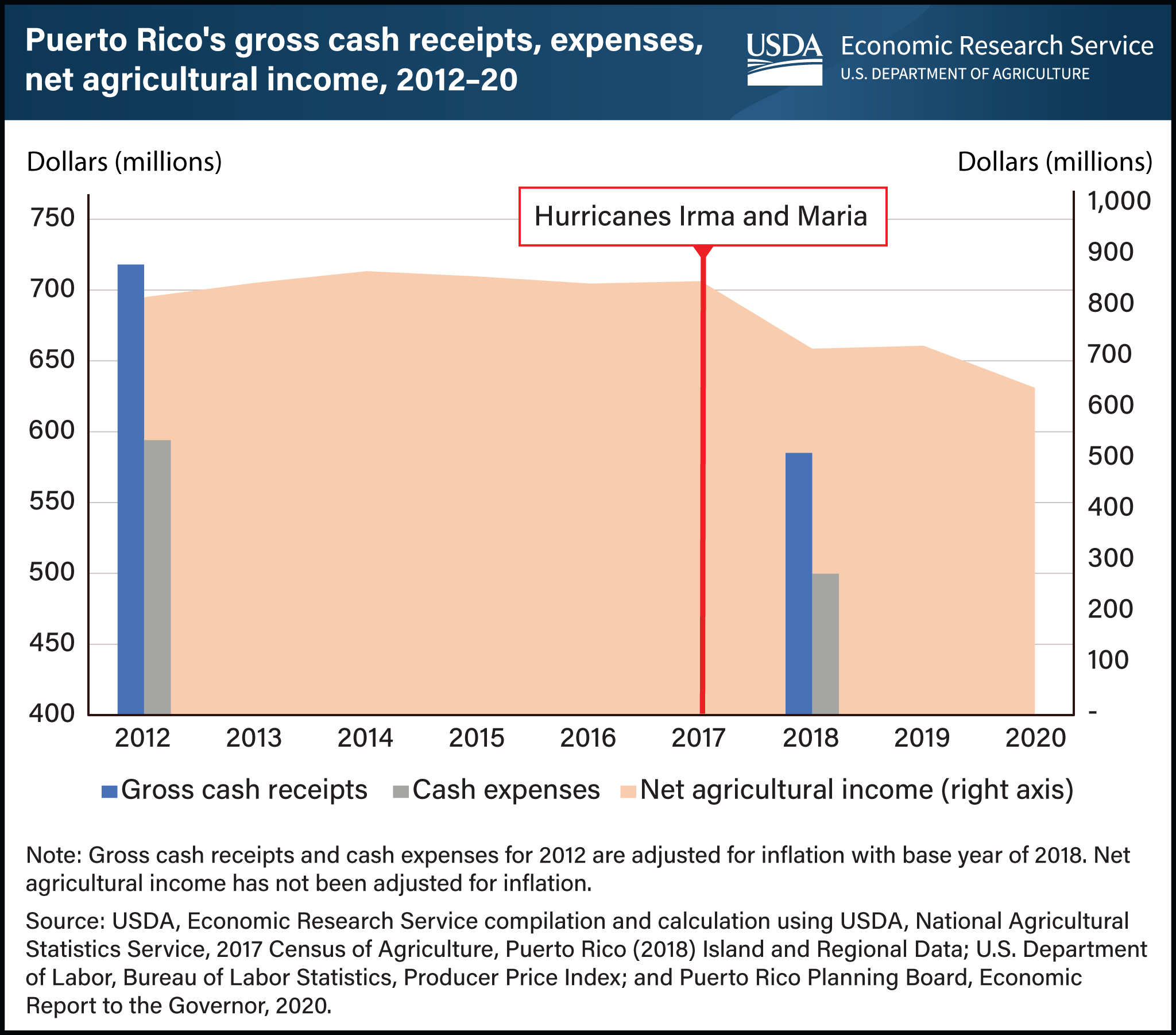Hurricanes in 2017 cut Puerto Rico’s agricultural sector revenue by 19 percent
- by Bart Kenner, James Kaufman and Dylan Russell
- 4/27/2023

In September 2017, Hurricanes Irma and Maria caused major destruction across Puerto Rico’s agricultural sector. The destruction of infrastructure, operations, and crops led to an exodus of farmworkers, which further hampered the farm sector’s ability to recover. Data from the USDA, National Agricultural Statistics Service (NASS), Census of Agriculture, conducted every 5 years, show how the hurricanes impacted Puerto Rico’s farm income and expenses. Between 2012 and 2018, the number of farms declined by nearly 38 percent. Gross cash receipts—the sum of the sale of agricultural commodities, cash from farm-related income, and participation in Government farm programs—fell 19 percent in inflation-adjusted dollars from $718 million to $585 million. Cash expenses for Puerto Rican farms also decreased, falling 16 percent from $594 million to $500 million. Puerto Rico Planning Board’s data for net agricultural farm income, which includes non-cash income and expenses such as inventory changes, show a similar decline over the span of time that includes years not captured by NASS census data. From 2012 to 2020, net agricultural farm income (not adjusted for inflation) fell by $101 million. This chart first appeared in the USDA, Economic Research Service report, Puerto Rico’s Agricultural Economy in the Aftermath of Hurricanes Irma and Maria: A Brief Overview, April 2023.

